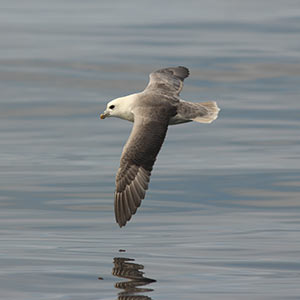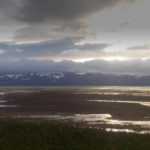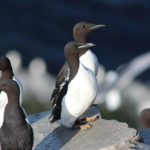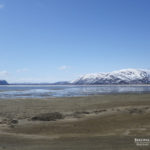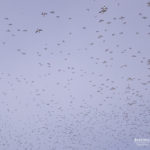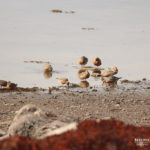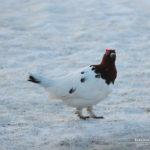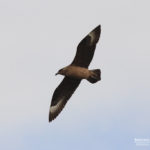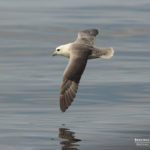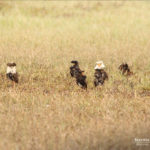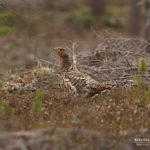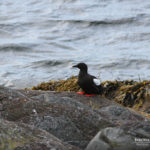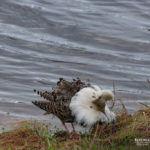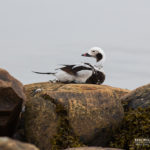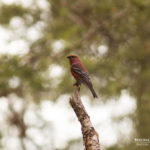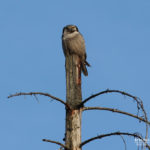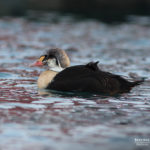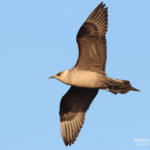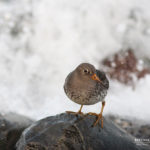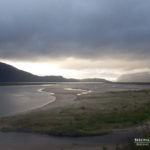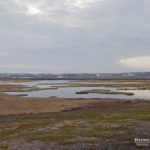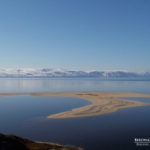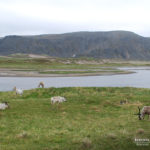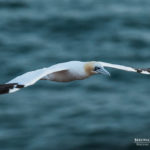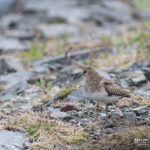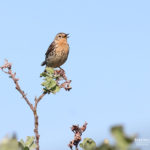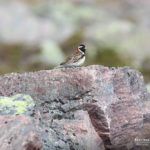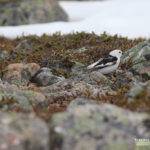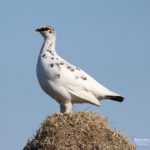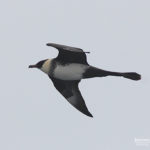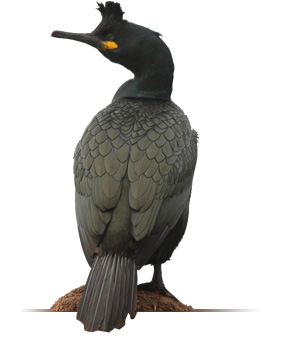Varanger and Pasvik.
During May the masses of migratory birds arrive. Some species are passing by, while others return to their breeding grounds. A massive Seabird migration can be seen from the outermost points,- along the coast. Fulmars are the most numerous and can come in a constant stream, as far as the eye can see.
Pomarine Skua and White-billed Diver are character birds at this time. Long-tailed Skua, Arctic Skua, Red-throated,- and Black-throated Diver are other species that can be observed in impressive numbers. Other highlights are the big flocks of Common Scoters and Long-tailed Duck. King Eiders are still present in good numbers, while the Steller`s Eider are seen in smaller flocks.
 Pomarine Skua
Pomarine Skua
Varangerfjord
Thousands of Shorebirds in their beautiful breeding plumage, gather along the coast . Among the species are Bar-tailed Godwit, Dunlin, Ruddy Turnstone, Red Knot, Temminck`s Stint, Little Stint, Red- necked Phalarope and Ruff.
The Ruff lek is a spectacular sight. Males with a vast varaity of plumages gather to fight. Unfortunately the populations have declined dramatically,- all over Europe. Varangere still hosts a healthy population, but extra precautions are required when photographing this endangered species.
Rough-legged Buzzard and White-tailed Eagle are rather common to see. Merlin, Gyr Falcon and Peregrine Falcon are also frequently seen, hunting along the coast. Flocks of Tundra Been Geese feed on the fields and marshes, often with some Pink-footed -and Greater White-fronted Goose mixed in. The extremely rare Lesser White-fronted Goose can be seen at this time of the year.
Hornøya bird cliff
At Hornøya bird cliff you will experience a sea bird colony,- on close range. Kittiwakes, European Shags, Atlantic Puffins, Razorbills, Common-, Black-, and Brünnick`s Guillemot all breed here. For the latter this is one of the few breeding sites in “mainland”- Europe. Hornøya is excellent for photographing, as you can get within meters from the birds. A path takes you through the colony and up to the top of the island. Here you have a great view over the Barents Sea and the Varanger coast.
Pasvik
During May the returning passerines fills the taiga forest with songs. Bluethroat, Sedge Warbler, Willow Warbler and Tree Pipit being some of them. Taiga Bean Goose, Smew, Northern Hawkowl, Siberian Jay, Siberian Tit, Bohemian Waxwing and Pine Grosbeak also breed here. Other species you can expect to see here are Common Crane, Short-eared Owl, Capercaillie, Black Grouse and Willow Grouse. More scarse species are Tree-toed Woodpecker, Black Woodpecker and Hazel Hen.
